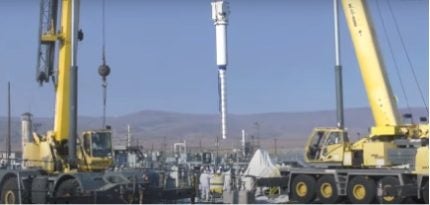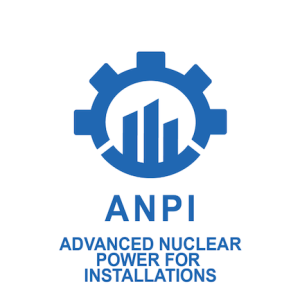
Workers at the US Hanford site in Washington State are installing equipment to demonstrate how an alternative treatment technology could safely accelerate clean-up of radioactive tank waste. The Test Bed Initiative (TBI) Demonstration will treat approximately 2,000 gallons of tank waste and ship it to commercially licensed facilities in Texas and Utah that will immobilise it in grout and dispose of it.
The Hanford Nuclear Reservation, established during World War II is the subject of a decades-long, multi-billion-dollar clean-up effort. It is the most contaminated site of radioactive waste in the USA. While operational, it produced about 66% of the plutonium used for US nuclear weapons. A series of massive underground storage tanks ranging in capacity from 55,000 gallons to more than 1,000,000 gallons were constructed to hold the wastes from plutonium production.
They are located throughout Hanford’s 200 Area in a 18 “tank farms”, each comprising from two to 16 tanks. There are 149 original single-shell tanks and 28 double-shell tanks which were built later. They contain liquids, gases, semi-solids, and solids. All of the liquid that could be safely pumped out of the single shell tanks and transferred into double shell tanks has already taken place. Work now centres on transferring the solid and semi-solid wastes into the double shell models.
“The TBI Demonstration does not impact our preparations to immobilise tank waste in glass and supports the Department’s goal to consider additional options for safely and efficiently treating low-activity waste at the site,” said Brian Vance, the Department of Energy’s top manager at Hanford.
The Department of Energy (DOE) and its contractor, Washington River Protection Solutions (WRPS), are installing a control room, shipping totes, and other equipment to begin the TBI Demonstration. Workers will install and test the equipment through September, with treatment operations set to take place by the end of the year. DOE plans to ship the treated waste in fiscal year 2025 after laboratory testing ensures it meets requirements.
Using this approach will safely treat low-activity waste from Hanford tanks and dispose of it outside Washington state in a manner that would reduce risks to workers, the public and the environment consistent with industry standards.
The demonstration expands on previous treatment of three gallons of waste for off-site grouting, demonstrating the ability to treat some of Hanford’s low-activity waste using commercial, licensed, permitted facilities. The Washington State Department of Ecology issued a Research, Development, & Demonstration permit for construction to begin in July. Any proposal to treat, stabilise, and dispose offsite of more than the 2,000 gallons would be evaluated in separate regulatory reviews and evaluations.
Meanwhile, DOE’s Office of Environmental Management has begun waste retrieval at Hanford’s third set of underground waste storage tanks. WRPS will retrieve and transfer more than 325,000 gallons of waste from single-shell Tank A-101 in Hanford’s A Tank Farm. Workers will send the waste to a newer, double-shell tank for continued safe storage.
The start of retrieval activities in the tank farm comes one month after workers emptied the site’s 21st single-shell tank. Waste removed from the 21 tanks totals approximately 3m gallons. “Despite this work being some of the most challenging and complex in EM’s mission to clean up sites across the country, Hanford teams have proven proficient in safely retrieving waste while preparing for future retrieval,” said Delmar Noyes, Hanford assistant manager for Tank Waste Operations.
The six tanks in A Tank Farm were built in the mid-1950s with a carbon-steel liner surrounded by a layer of thick, steel-reinforced concrete. The waste in Tank A-101 is primarily salt-based, solid waste. It will be broken down using pressurised water directed through robotic equipment, then pumped out and transferred to a newer tank.
Initiating retrieval in Tank A-101 culminates years of preparation that included removing outdated equipment and installing a retrieval system and associated infrastructure. During retrieval, workers will operate the equipment remotely from a nearby control trailer.
“Our retrievals team has extensive waste-removal experience from previous projects,” said Peggy Hamilton, WRPS retrievals manager. “The A Tank Farm will bring new challenges, but I know the team will handle them well as they continue to advance the Hanford cleanup mission.” Tank A-101 retrieval operations could take approximately 1.5 years due to the volume of waste to be retrieved and the need to integrate with other operating facilities.






